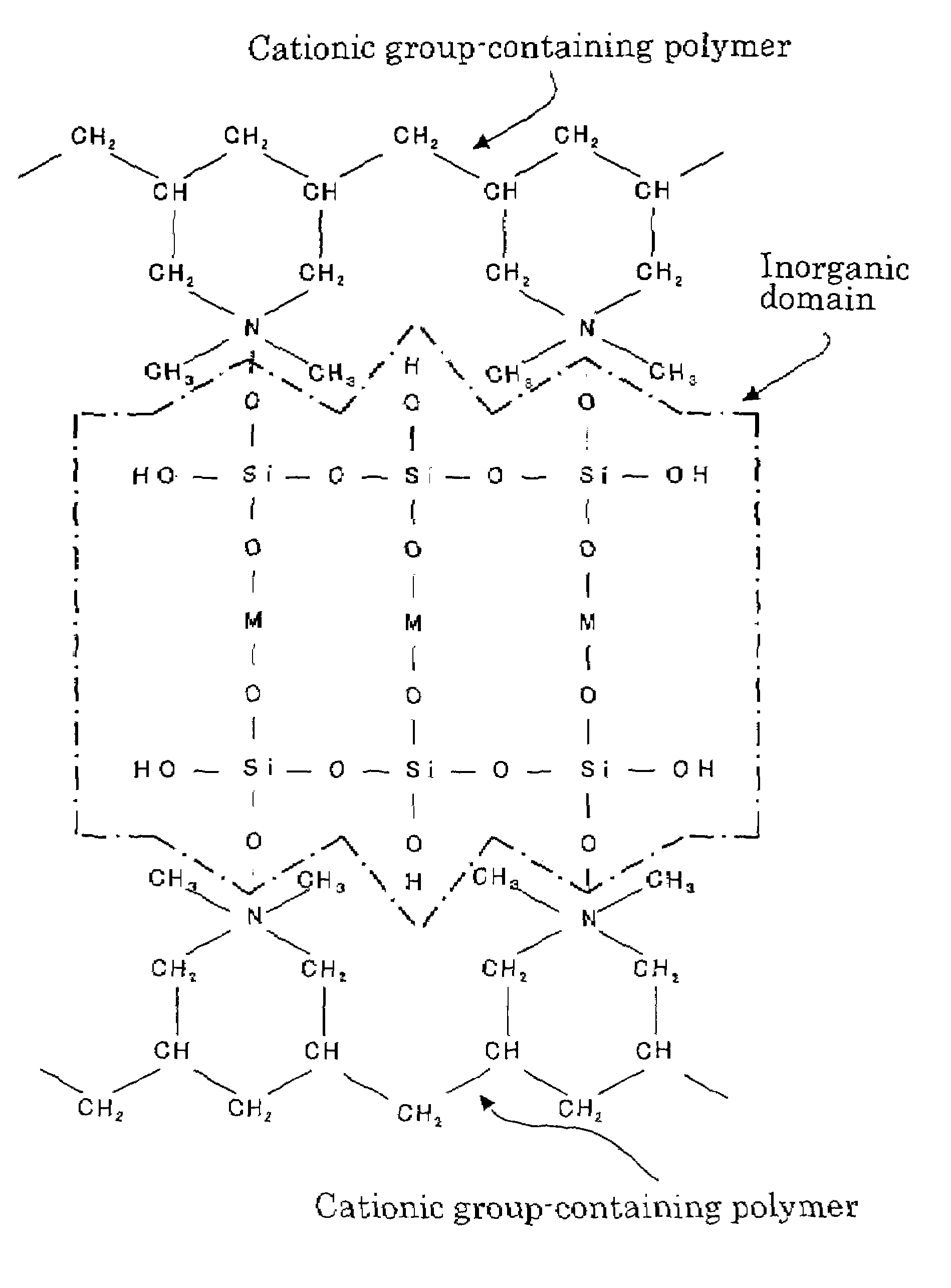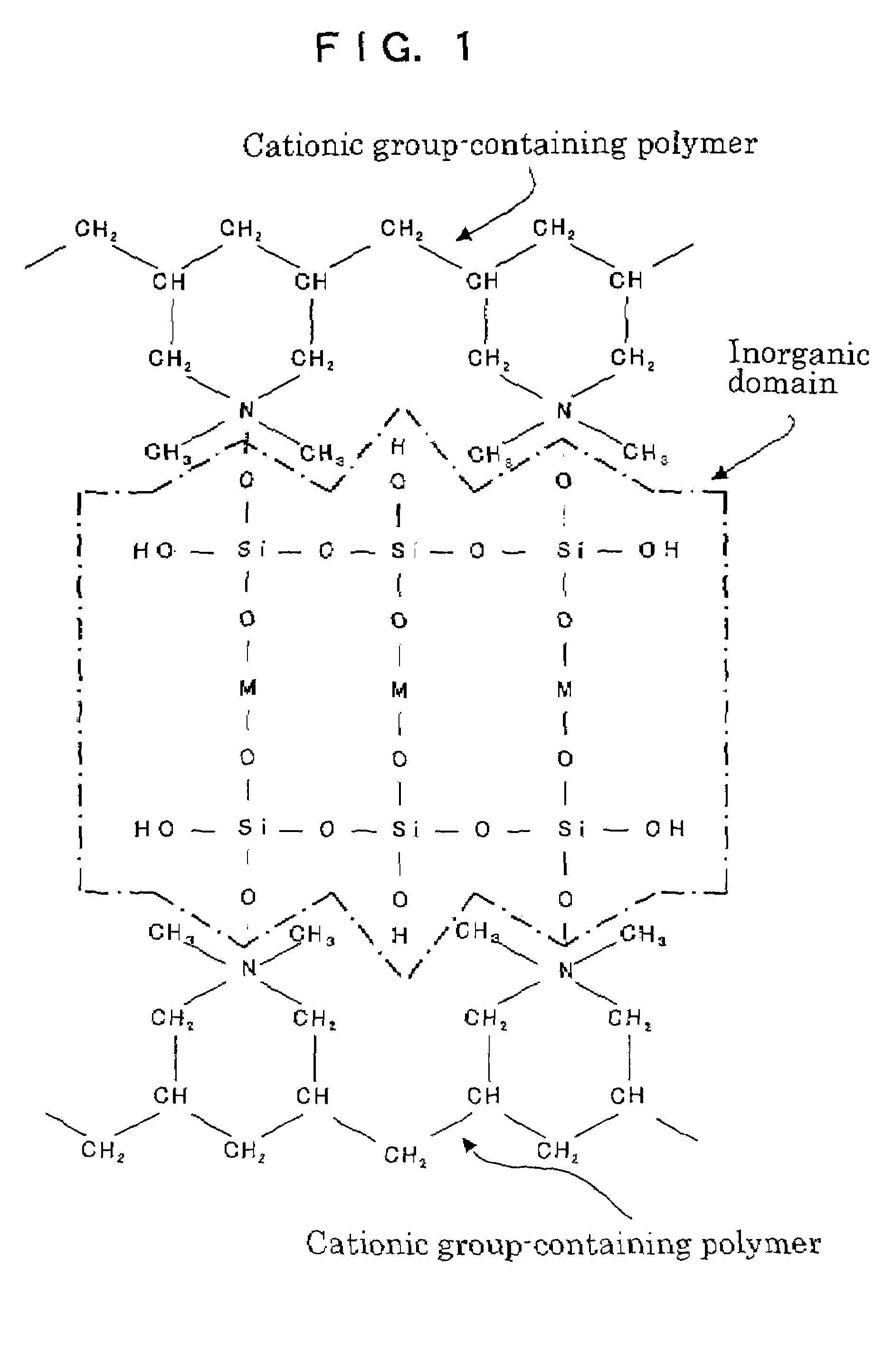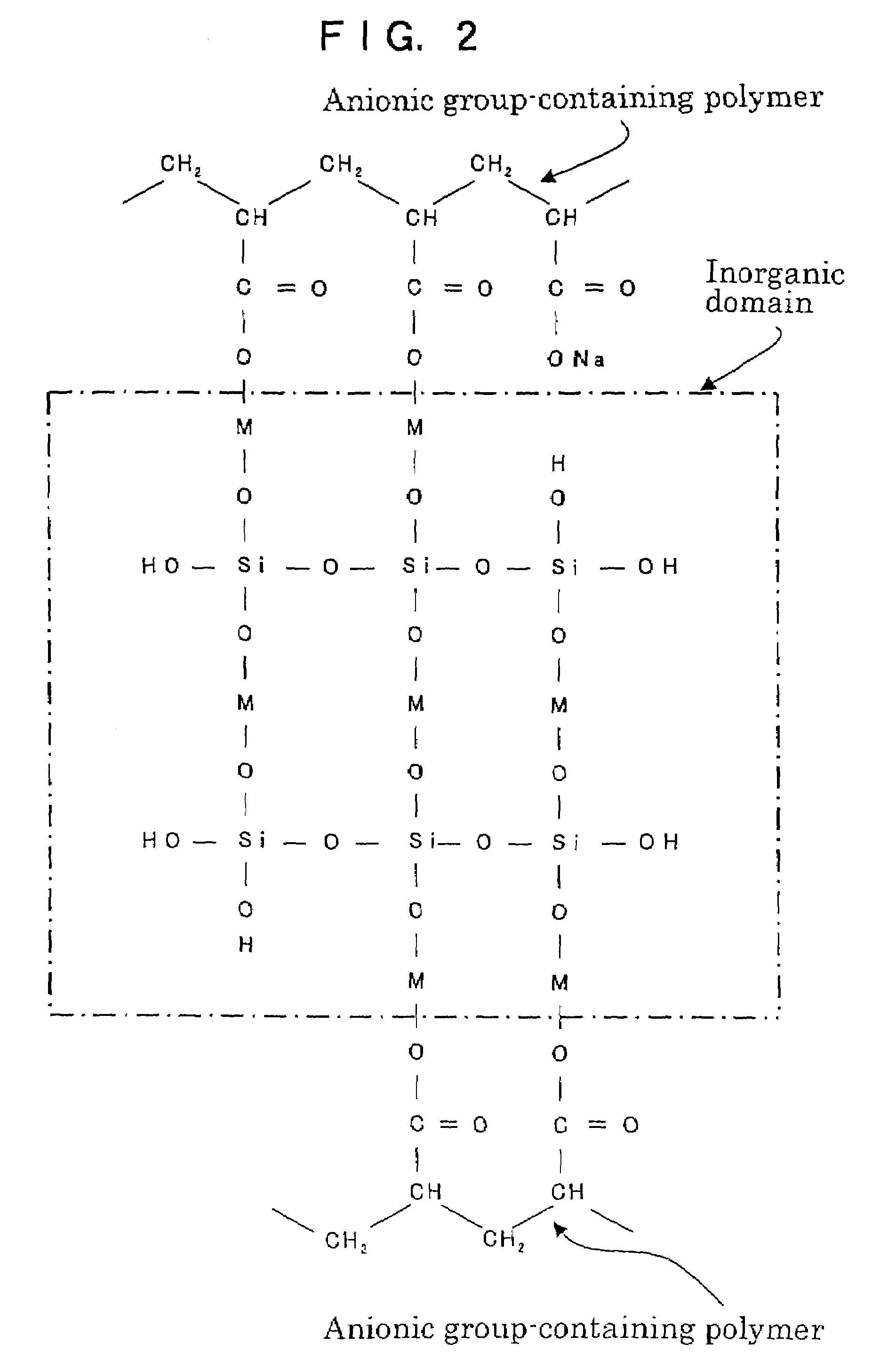Organic domain/inorganic domain complex materials and use thereof
a complex material and organic domain technology, applied in the field of organic domain/inorganic domain hybrid materials, can solve the problems of no document disclosing a technique, organic substance decomposition, and inability to disclose a technique to produce hybrid materials exhibiting high hydrophilicity, so as to prevent scattering, improve surface characteristics, and facilitate production
- Summary
- Abstract
- Description
- Claims
- Application Information
AI Technical Summary
Benefits of technology
Problems solved by technology
Method used
Image
Examples
example 1
(1) Synthesis of a Hydrophilicity Reagent
[0304]2.5 Parts by weight of a 20% by weight aqueous solution of polydiallyldimethylammonium chloride (reagent manufactured and sold by Aldrich, Ltd., U.S.A.; weight average molecular weight=100,000 to 200,000) and 5 parts by weight of a 10% by weight aqueous solution of sodium metasilicate nonahydrate were mixed together and the resultant mixture was stirred for 10 minutes. Then, into the mixture were charged 3 parts by weight of a 10% by weight aqueous solution of calcium nitrate tetrahydrate and 0.33 parts by weight of 1 N hydrochloric acid to obtain an opaque hydrophilicity reagent dispersion A. The obtained hydrophilicity reagent dispersion A was subjected to a washing operation comprising the above-mentioned washing step 1 using a centrifuge (Centra MP 4 type, manufactured and sold by International Equipment Company, U.S.A.) and the subsequent washing step 2 (which was repeated 3 times in total). The resultant was dried at 60° C. under ...
example 2
[0306]A hydrophilic coating composition was produced in substantially the same manner as in Example 1, except that the amount of the hydrophilicity reagent dispersion A was changed to 1 part by weight. The coating formation and evaluations were conducted in the same manner as in Example 1. The contact angle of a waterdrop was measured and found to be 57°. A waterdrop flowed down swiftly on the coating, and there was no residue on the coating after the coating was dried. The release of the coating from the substrate was not observed. Further, with respect to coating, the above-mentioned test for evaluating the stain resistance was conducted for 2 months, and it was found that the stain resistance of the coating was ◯. In addition, the coating liquid was stored under the same conditions as in Example 1. Even after the bottle containing the coating liquid had been stored for 1 week or more, the coating liquid maintained its fluidity and was usable as a coating liquid.
example 3
(1) Synthesis of a Hybrid Material
[0307]A blue hybrid material dispersion B was produced in substantially the same manner as in Example 1, except that, instead of a 10% by weight aqueous solution of calcium nitrate tetrahydrate, a 10.6% by weight aqueous solution of copper sulfate pentahydrate was used. The hybrid material dispersion B was subjected to washing operations and drying operations in substantially the same manner as in Example 1 to thereby obtain a final dried hybrid material. The final dried hybrid material was analyzed by infra-red spectroscopy. In the analysis, both a peak ascribed to an organic compound and a peak ascribed to an inorganic compound were observed, thereby confirming the presence of the hybrid material of the present invention in the hybrid material dispersion B.
(2) Preparation and Evaluation of a Hydrophilic Coating Composition
[0308]3 Parts by weight of an acryl latex (E901, manufactured and sold by Asahi Kasei Kabushiki Kaisha, Japan; solids content: ...
PUM
| Property | Measurement | Unit |
|---|---|---|
| Acidity | aaaaa | aaaaa |
| Hydrophilicity | aaaaa | aaaaa |
| Antimicrobial properties | aaaaa | aaaaa |
Abstract
Description
Claims
Application Information
 Login to View More
Login to View More - R&D
- Intellectual Property
- Life Sciences
- Materials
- Tech Scout
- Unparalleled Data Quality
- Higher Quality Content
- 60% Fewer Hallucinations
Browse by: Latest US Patents, China's latest patents, Technical Efficacy Thesaurus, Application Domain, Technology Topic, Popular Technical Reports.
© 2025 PatSnap. All rights reserved.Legal|Privacy policy|Modern Slavery Act Transparency Statement|Sitemap|About US| Contact US: help@patsnap.com



